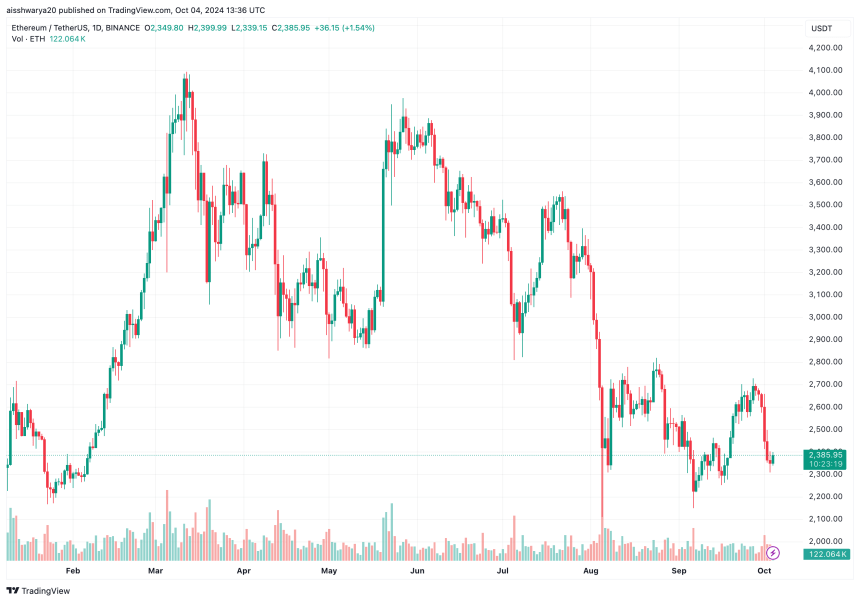According to the most recent Binance Research report, the issuance rate of Ethereum (ETH) has continued to increase as of September 2024, raising worries regarding the digital asset’s claim of being “ultrasound money.”
Ethereum Issuance Rate Keeps Rising
In its October 2024 Monthly Market Insights report, Binance Research pointed out that the ETH issuance rate has been on the rise during September, deviating from its earlier deflationary trend.
Related Reading
The second largest digital currency by reported market capitalization experienced a 30-day annualized inflation rate of about 0.74%, a figure not seen in the past two years. This significant increase in ETH supply inflation challenges its “ultrasound money” classification.

Notably, the phrase “ultrasound money” is derived from Bitcoin’s (BTC) concept of “sound money.” While BTC has a capped supply of 21 million, ETH has the potential to become deflationary, theoretically enhancing its scarcity and shielding it from value depreciation due to inflation.
The elevated issuance rate of Ethereum may stem from multiple factors, including limited activity on the mainnet, which results in reduced transaction fees and subsequently lower ETH burn rates.
In 2021, Ethereum core developers rolled out EIP-1559, introducing a fee-burning mechanism designed to curb ETH’s circulating supply, thereby exerting deflationary pressure on the token.
However, as mainnet activity waned, the amount of ETH being burned failed to keep pace with the ETH issuance rate, creating a net inflationary trajectory.
Notably, September 2024 recorded one of the lowest ETH burn rates since the much-anticipated Merge event that marked Ethereum’s transition from a proof-of-work (PoW) to a proof-of-stake (PoS) consensus model.
Could Ethereum Layer-2 Solutions Be the Cause of Low ETH Burn Rate?
The report identifies March 2024 as the beginning of Ethereum’s inflationary trend, following the implementation of EIP-4844 or the Dencun upgrade that lowered transaction costs on layer-2 scaling solutions like Optimism (OP), Arbitrum (ARB), Base, and Polygon (MATIC). The report states:
As L2s consumed network activity throughout the year—further influenced by broader market conditions—transaction fees and thus burned fees on Ethereum fell, with September recording some of the lowest levels since the Merge. This has inhibited ETH from decreasing in supply to maintain deflation, resulting in the net positive daily supply changes we currently observe.
Recent patterns support this statement, as activity on layer-2 solutions has expanded across various metrics. For example, a report from July 2024 highlighted that daily active addresses and transaction volumes on Polygon surged notably.
Related Reading
In a similar vein, decentralized finance (DeFi) activity on Arbitrum grew earlier this year when the decentralized exchange (DEX) Uniswap surpassed $150 billion in total swap volume on the platform.
Another report indicated that more than 48% of digital assets bridged from the Ethereum network find their way to Arbitrum, reflecting users’ strong confidence in the layer-2 network’s security and reliability. At press time, ETH is trading at $2,385, marking a 1.7% increase over the past 24 hours.

Featured image from Unsplash, charts from Binance Research and Tradingview.com








